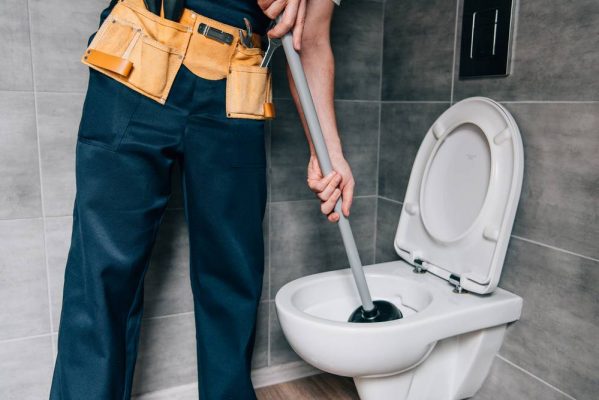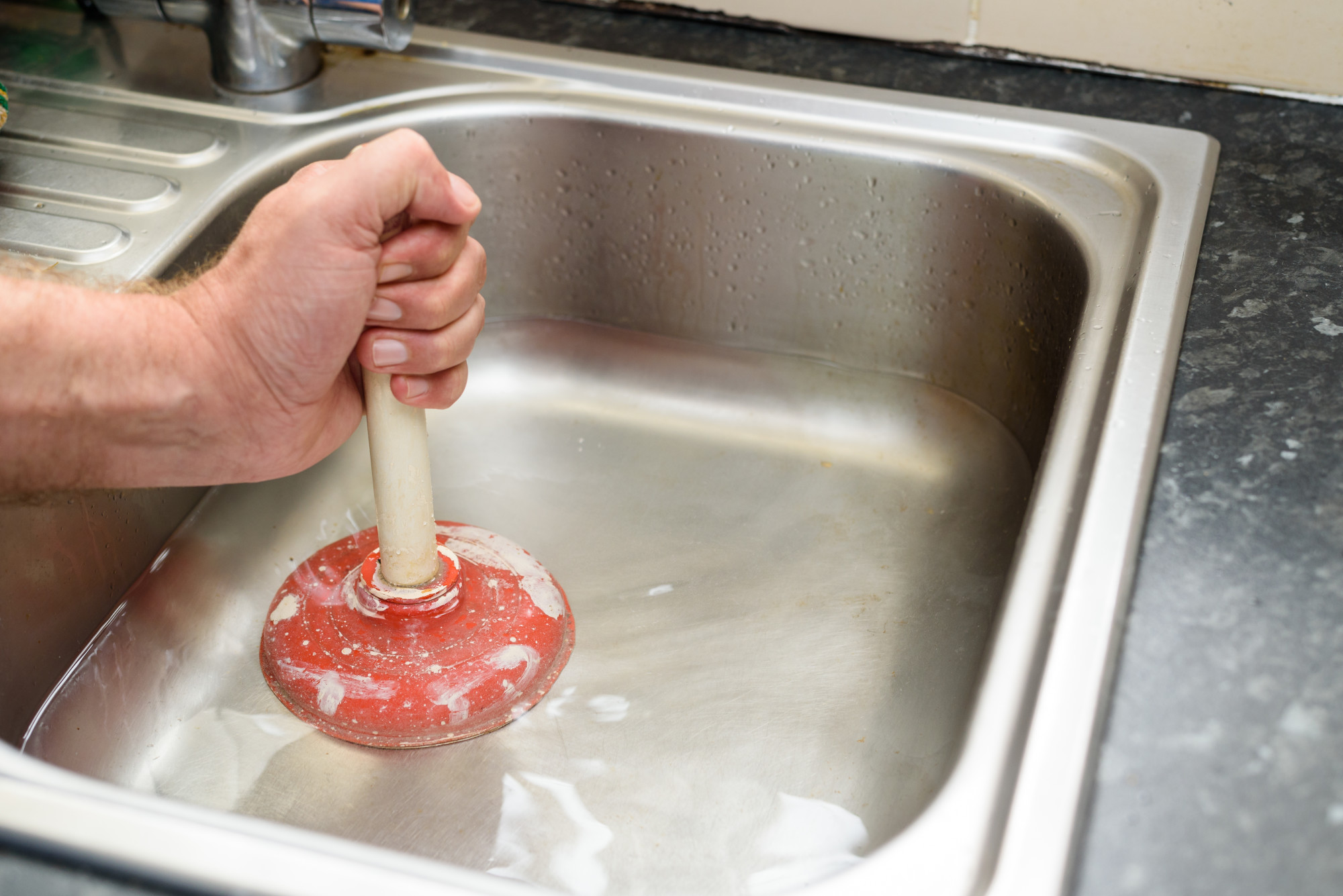How do you feel about A Guide to Plungers (and How to Use Them)?

Introduction
Appropriate upkeep of household drains is necessary for protecting against clogs and guaranteeing smooth water flow. One of the trick devices in every homeowner's toolkit is the bettor, along with different drainpipe cleaners made to deal with persistent clogs effectively. This short article checks out exactly how to utilize plungers and drain cleaners effectively to maintain your drains moving easily.
Section 1: Understanding Plungers
Types of Plungers
There are several types of bettors readily available, each designed for different kinds of drains pipes and obstructs. The most typical types consist of mug plungers, flange plungers, and accordion bettors.
How Plungers Job
Bettors work with the principle of developing pressure and suction to dislodge clogs. When appropriately used over a drainpipe, they develop a vacuum cleaner that can pull out debris or separate obstructions.
Choosing the Right Bettor
Choosing the best plunger depends upon the kind of drainpipe and the nature of the clog. Mug bettors are perfect for sinks and bathtubs, while flange bettors are better suited for commodes due to their design.
Usual Blunders with Plungers
Staying clear of these errors guarantees reliable plunging: inappropriate seal around the drain, insufficient pressure, and unclear surrounding particles.
Area 2: Using Plungers Successfully
Prep work
Prior to plunging, guarantee the bettor covers the drainpipe entirely and creates a limited seal. Clear any visible debris around the drainpipe opening.
Technique
Begin with mild plunging movements to construct suction. Rise stress slowly, utilizing a stable rhythm. Repeat as necessary until the drain clears.
Troubleshooting Tips
If plunging doesn't function, try readjusting the seal, applying oil jelly for a far better seal, or making use of a various kind of plunger.
Section 3: Recognizing Drainpipe Cleaning Company
Types of Drainpipe Cleaning Company
Drain cleansers can be chemical or enzymatic. Chemical cleaners make use of strong chemicals to liquify blockages, while chemical cleansers utilize all-natural enzymes to break down organic matter.
How Drain Cleaners Job
Chemical cleansers react with clogs to liquify them, while chemical cleaners break down natural materials like hair and oil without damaging pipelines.
Safety and security Considerations
Always use gloves and eye security when utilizing chemical drainpipe cleaners. Make certain sufficient air flow and adhere to supplier guidelines thoroughly.
Eco-Friendly Alternatives
Take into consideration using vinegar and cooking soda or enzyme-based cleansers for eco-friendly options that are much safer for pipelines and the environment.
Section 4: Making Use Of Drain Cleansers Properly
Application Strategies
Put chemical cleaners directly into the drain opening. Allow them to work for the suggested time prior to purging with hot water. Enzymatic cleansers should rest over night.
Precautions
Prevent blending different types of cleansers, as this can generate toxic fumes. Never utilize chemical cleansers in conjunction with a plunger, as spilling can happen.
Taking Care Of Persistent Blockages
For consistent blockages, consider using a plumbing serpent or calling a specialist plumbing professional to avoid damage to pipelines.
Final thought
Finally, understanding how to make use of plungers and drainpipe cleansers successfully is essential for maintaining healthy plumbing systems. By choosing the right devices and methods, property owners can deal with minor obstructions and avoid significant plumbing problems down the line.
How To Properly Use A Plumbing Snake To Clear Drains
When any drain clogs in our home arise, we tend to gravitate toward the plunger and little else. In cases where the plunger and its vacuum-created pressure are not able to clear clogs, many immediately move to harmful chemicals or simply call their plumber to fix the issue.
we’re happy to help with all drain cleaning needs and concerns. This includes informing you on a few other home remedies you may have at your disposal for minor to moderate clogs, one of which is the use of a plumbing snake. Many people have never used one of these before – let’s go over the steps to take when your drain clogs and you have a plumbing snake available.
Attempt Plunger Use
The first step here, as we noted above, should indeed be to grab your plunger when you notice a drain clog and attempt to resolve it this way. If you’re unsure how to use a particular type of plunger, our plumbers can answer any questions you have. If this doesn’t do the trick, however, you move on to the snake.
Locate And Prepare Snake
A plumbing snake is a metal or plastic device that’s generally about a quarter of an inch thick. It’s design with significant extensions, meant to reach down into your clogged drain and push the clog out. Snakes also contain drain augers that will latch onto and push stubborn blockages.
If your plunger doesn’t clear a clog, locate your snake and bring it to the drain in question. We also recommend keeping a bucket nearby to collect the clog once you pull it out, plus we’d advise wearing goggles and possibly protective gloves.
Feed Snake
Once you’re ready to go, feed the snake slowly down the drain, using the crank device it comes with to keep it moving until it finds the clog. Once this happens, much of the clog will be latched onto the coil so you can pull it out, while the rest will simply break up and flow downward.
Detach Debris
Remove the snake slowly from the drain, and once you’ve done so, pick off any debris that’s stuck to the coil. This is another area where wearing gloves is a must.
Flush Drain
Finally, take a few minutes to ensure the snake has done its job correctly. If you’ve been using it on a toilet, flush the toilet a couple times and make sure everything flows well. If you’ve used it on a different drain, flush it with some room temperature water.
https://www.mybuddytheplumber.com/blog/how-to-properly-use-a-plumbing-snake-to-clear-drains/

Application Strategies
Put chemical cleaners directly into the drain opening. Allow them to work for the suggested time prior to purging with hot water. Enzymatic cleansers should rest over night.
Precautions
Prevent blending different types of cleansers, as this can generate toxic fumes. Never utilize chemical cleansers in conjunction with a plunger, as spilling can happen.
Taking Care Of Persistent Blockages
For consistent blockages, consider using a plumbing serpent or calling a specialist plumbing professional to avoid damage to pipelines.
Final thought
Finally, understanding how to make use of plungers and drainpipe cleansers successfully is essential for maintaining healthy plumbing systems. By choosing the right devices and methods, property owners can deal with minor obstructions and avoid significant plumbing problems down the line.
How To Properly Use A Plumbing Snake To Clear Drains
When any drain clogs in our home arise, we tend to gravitate toward the plunger and little else. In cases where the plunger and its vacuum-created pressure are not able to clear clogs, many immediately move to harmful chemicals or simply call their plumber to fix the issue.
we’re happy to help with all drain cleaning needs and concerns. This includes informing you on a few other home remedies you may have at your disposal for minor to moderate clogs, one of which is the use of a plumbing snake. Many people have never used one of these before – let’s go over the steps to take when your drain clogs and you have a plumbing snake available.
Attempt Plunger Use
The first step here, as we noted above, should indeed be to grab your plunger when you notice a drain clog and attempt to resolve it this way. If you’re unsure how to use a particular type of plunger, our plumbers can answer any questions you have. If this doesn’t do the trick, however, you move on to the snake.
Locate And Prepare Snake
A plumbing snake is a metal or plastic device that’s generally about a quarter of an inch thick. It’s design with significant extensions, meant to reach down into your clogged drain and push the clog out. Snakes also contain drain augers that will latch onto and push stubborn blockages.
If your plunger doesn’t clear a clog, locate your snake and bring it to the drain in question. We also recommend keeping a bucket nearby to collect the clog once you pull it out, plus we’d advise wearing goggles and possibly protective gloves.
Feed Snake
Once you’re ready to go, feed the snake slowly down the drain, using the crank device it comes with to keep it moving until it finds the clog. Once this happens, much of the clog will be latched onto the coil so you can pull it out, while the rest will simply break up and flow downward.
Detach Debris
Remove the snake slowly from the drain, and once you’ve done so, pick off any debris that’s stuck to the coil. This is another area where wearing gloves is a must.
Flush Drain
Finally, take a few minutes to ensure the snake has done its job correctly. If you’ve been using it on a toilet, flush the toilet a couple times and make sure everything flows well. If you’ve used it on a different drain, flush it with some room temperature water.
https://www.mybuddytheplumber.com/blog/how-to-properly-use-a-plumbing-snake-to-clear-drains/

I stumbled upon that write up on Here's How to Correctly Use a Toilet Plunger while doing research the internet. If you liked our blog posting if you please do not forget to share it. I praise you for being here. Kindly come visit our site back soon.
Schedule